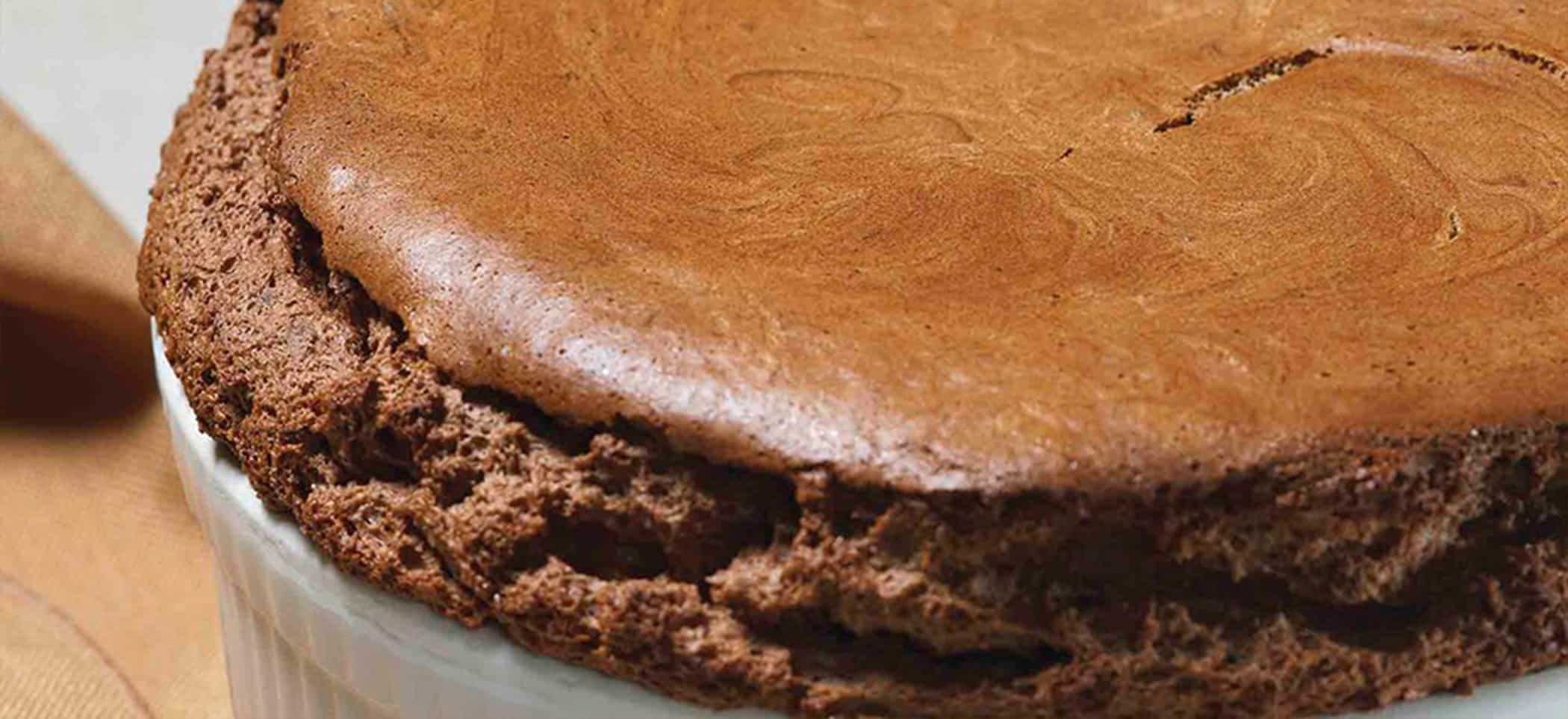

Directions
HEAT oven to 350°F. MIX 1/4 cup sugar, cocoa powder, flour and salt in medium saucepan; gradually WHISK IN milk until smooth. COOK over medium heat, stirring constantly until mixture thickens and boils. REMOVE from heat. STIR IN vanilla.
BEAT egg whites and cream of tartar in mixer bowl with whisk attachment on high speed until foamy. Beating constantly, ADD remaining 1/4 cup sugar, 2 Tbsp. at a time, beating after each addition until sugar is dissolved before adding the next. (RUB a bit of mixture between thumb and forefinger; it should feel completely smooth.) CONTINUE beating until whites are glossy and stand in soft peaks.
STIR egg yolks into chocolate sauce until blended. Gently but thoroughly FOLD yolk mixture into whites until no streaks of white remain. Carefully POUR into ungreased 1-1/2 to 2-qt. soufflé dish. For a “top hat”, hold metal spatula upright and make a ring on top of the soufflé mixture, 1 inch from side of dish and 1 inch deep, if desired.
BAKE in 350°F oven until soufflé is puffy, delicately browned and shakes slightly when oven rack is moved gently back and forth, 30 to 40 minutes. SERVE immediately.
Ingredients
- 4 large EGG whites, room temperature
- 1/2 cup sugar, DIVIDED
- 1/3 cup unsweetened cocoa powder
- 1/4 cup all-purpose flour
- 1 cup milk
- 1/2 tsp. vanilla
- 1/2 tsp. cream of tartar
Tips
Impress guests with this elegant, rich chocolate dessert. Top with raspberry sauce if desired.
For detailed soufflé techniques and information, see Basic Dessert Soufflé.
The egg white component of this soufflé, made in step 2, is actually a soft meringue. For more information, see Basic Soft Meringue.
This recipe is an excellent source of choline and protein, and a good source of folate.
Per serving: 1/4 of recipe
- Calories 201
- Total fat 6 g
- Saturated fat 2 g
- Polyunsaturated fat 1 g
- Monounsaturated fat 2 g
- Cholesterol 188 mg
- Sodium 163 mg
- Carbohydrates 32 g
- Fiber 3 g
- Sugar 21 g
- Protein 10 g
- Vitamin A 73 mcg
- Vitamin D 1 mcg
- Folate 43 mcg
- Choline 151 mg
- Calcium 102 mg
- Iron 1 mg
- Potassium 173 mg
To ensure food safety, eggs should be cooked until both the yolk and the white are firm. Consuming raw or undercooked eggs may increase your risk of foodborne illness, especially for those with certain medical conditions. For recipes that call for eggs that are raw or undercooked when the dish is served, use either pasteurized shell eggs that have been treated to destroy Salmonella, or use pasteurized egg products.
